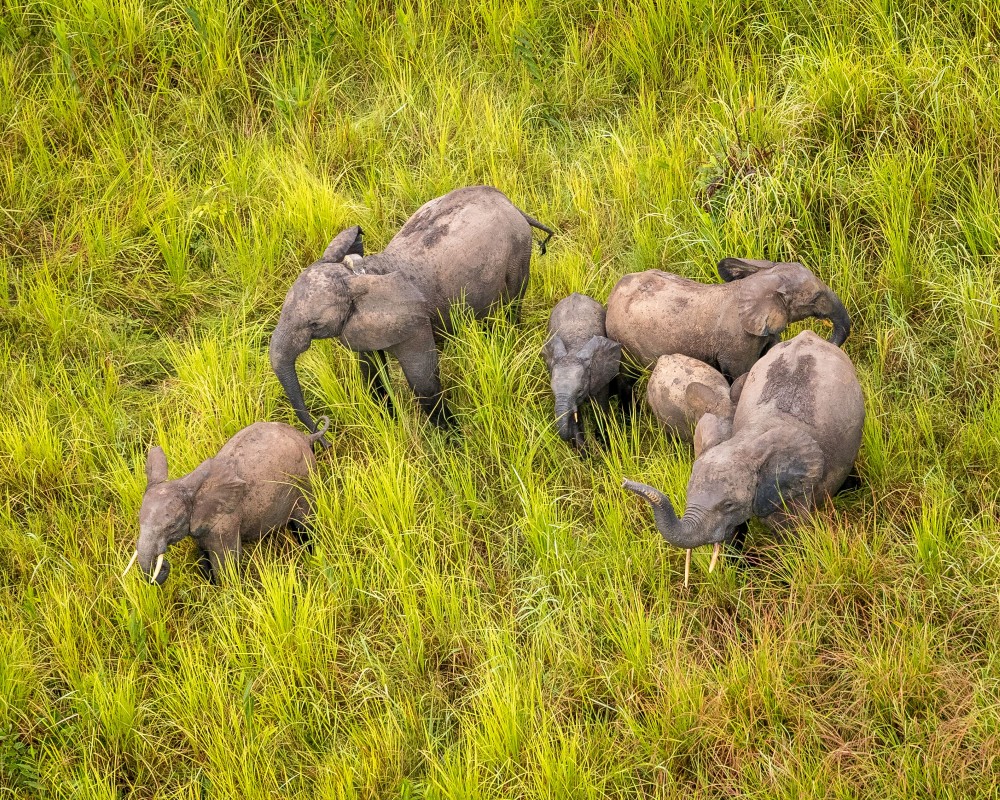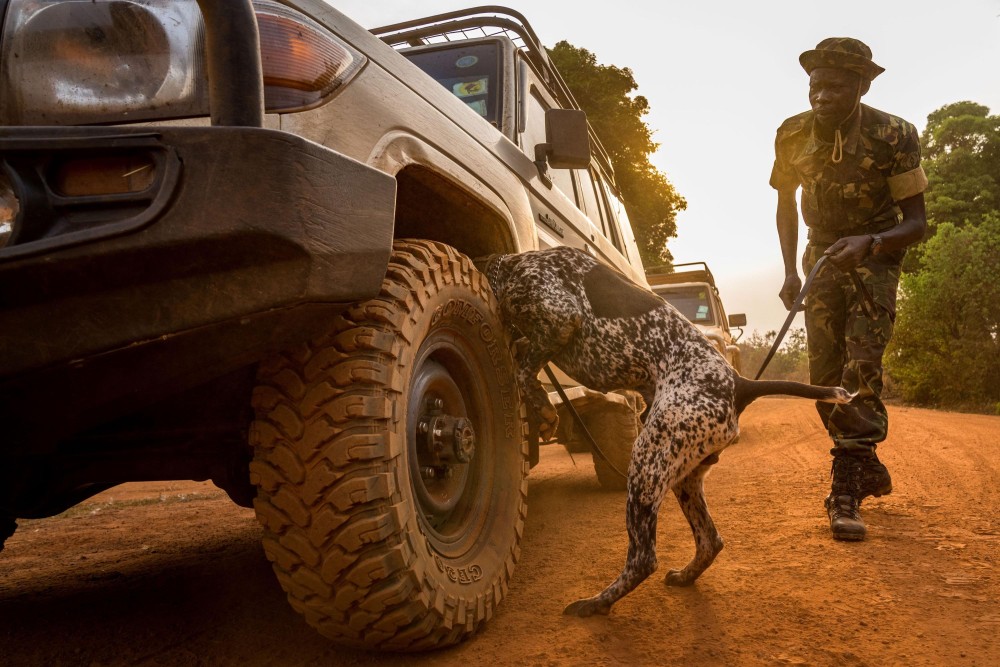With vast undulating grassland savannah amidst dense dry forest, Garamba National Park is one of the oldest national parks in Africa and home to the only notable elephant and giraffe populations in the region. With abundant food and water resources, the park provides excellent habitat for a full suite of mega-herbivores, from hippo to roan antelope. Today, thanks to intensive conservation and protection efforts, over 20,000 animals from 23 species can be found in the park, including lion, buffalo, giraffe and forest species such as chimpanzee, giant forest hog and golden cat, and the recently translocated 16 southern white rhino which are adapting well to their new environment.
Species Restorations

Prior to 2005, Garamba’s elephant were being poached at such an alarming rate that the species was experiencing negative population growth. However, by 2019 poaching had decreased by 90% and the population has since stabilised. The critically endangered Kordofan giraffe population has grown from 22 individuals in 2012 to 83 in 2023, surpassing the projected population growth rate.
Monitoring and Surveys
Garamba has embarked on several monitoring programmes, fitting tracking devices to elephant to learn more about their movements. Fifteen elephant were collared in 2023, bringing the total to 40 active elephant collars.
Five camera traps were deployed in Azande Domaine de Chasse, providing excellent data on forest species, including chimpanzee, golden cat, blue duiker, bongo, and red-tailed monkey. The Research and Monitoring Team visited Azande, the first research team to do so in decades. Extensive signs of elephant were found as well as many chimpanzee nests in gallery forests, confirming the presence of this key species. Red colobus monkey was recorded for the first time in the Garamba Complex since an expedition in 1952.

Conservation Law Enforcement
Garamba is situated in one of the most volatile areas in Africa. This is largely due to a challenging combination of armed poachers and various guerrilla groups, most of whom view the wildlife in Garamba as a way of supporting themselves through the ivory and bushmeat trade.
Our efforts are numerous, and their impacts transformational. The ranger team is often the only stabilising element in the region and the only lifeline for both wildlife and people. Rangers not only risk their lives protecting elephants but are often the first and only responders to critical security incidents. With security created through the presence of rangers in the park, neighbouring communities are experiencing improved sense of stability, which is ultimately improving the livelihoods.
Garamba’s rangers undergo training by African Parks’ in-house training facilitators. Leadership and instructor training take place annually, as well as refresher training for the canine unit. Two Basenji puppies joined the team in 2022 – the first of this breed to be trialled as part of a canine unit. Known as the ‘barkless dog’, Basenjis are resistant to local diseases such as trypanosomiasis. The canine unit carried out a number of detection and tracking patrols.
